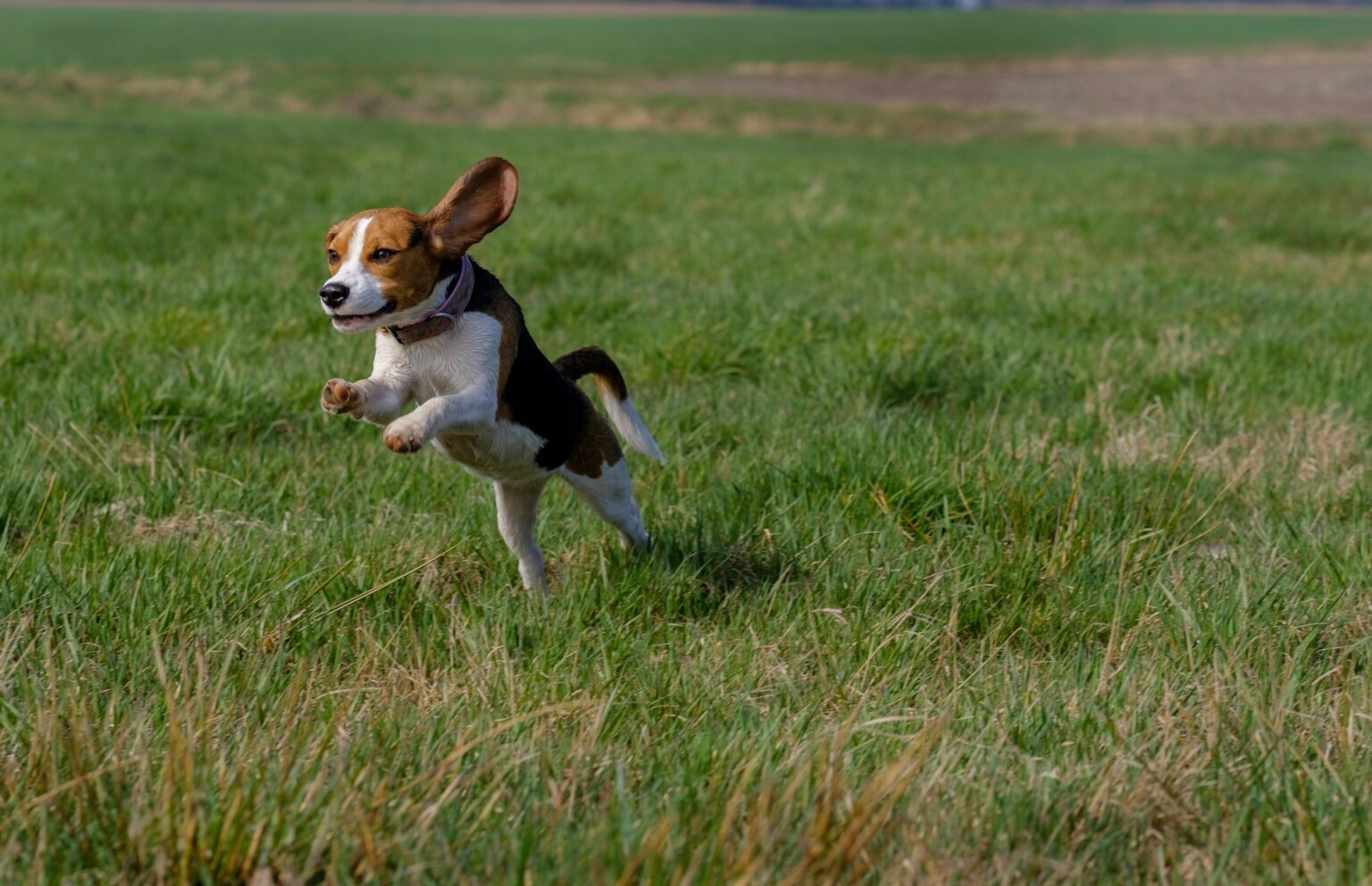Beagle
You must also take your lifestyle into account. Certain breeds need special care. It is wise to consult a mature breeder who can help you decide on a breed that matches your expectations. It is also worth learning as much as you can about the breed you are interested in. Is the Beagle your dream dog? Discover the essential facts about this extraordinary breed.
Be honest with yourself about what you can handle when choosing a dog breed. In many ways, beagles are a different breed. The first thing you need to know about this breed is its appearance and size. Here, you will also learn about the amazing history of these dogs and where they come from. The other thing to look into before settling on a dog of this breed is the personality. Their health is also a big consideration. It is important to note that Beagles are a purebred breed, so they are prone to certain diseases. You should be prepared for this and know what to consult with your vet. But the main point is the summary of caring, that is, in detail, what these dogs require. Are you suited to being a Beagle owner? Test yourself!
Appearance
Beagles are medium in size, so they are big enough to provide owners with a sense of security but not so big that they take up much space in your home. They have a compact, muscular build with a broad breast and a straight back. These dogs may have strong bodies if they work out. They also have quite short legs, which helps them with their stability when running or on long walks. Beagles have medium-length tails; when a dog gets alert and excited, they will carry their tail high in the air.
A prominent forehead characterizes the face of these dogs. They have long muzzles with well-developed noses. The cheeks could also be a tad sagging, which is natural as this area of the face has relatively loose skin. They also have big dark eyes, giving a soft, friendly look to their countenance. This breed’s ears are long, with a wide base, and droop down the side of the face.
The coat is short, smooth, and fits close to the body, making it easy to keep clean and groom. Hair can come in various shades. However, Beagles most often appear in three basic colors, black, white, and brown, with white dominating their torso, paws, and tail. Overall, the Beagle may appear alert, somewhat proud, and confident in its posture. Beagles stand out from all other breeds because they are noticeable, happy, and vigorous dogs, thanks to their appearance.
Beagle Breed History
The history of the Beagle dog breed is a long and interesting one. They have existed for thousands of years, from ancient times. Their ancestors were most likely southern hounds because they hunted small mammals like rabbits and hares. However, its precise origin is not known. Some claim the dogs came from England.
They derive their name from an Old English term for ‘small dog.’ The Beagle of the Middle Ages is very different from the breed we recognize today. Back then, these dogs were likely much smaller, which made them popular pets for the English nobility and aristocracy. Probably, even Elizabeth I had a toy Beagle. Nonetheless, they were primarily hunting small animals, and these dogs were great trackers and relentless hunters, making them the ideal companions for any hunter. Crossbreeding them with greyhounds eventually made it possible for them to hunt larger animals, like deer.
It was not until the 19th century that the standard breed type began to form. That was when Beagles received show dog recognition. As we know, the breed was sired from a variety of hound breeds, which is why hunting traits have become ingrained into these dogs. They have distinctive tails that are carried high when alert and are typically white so that the owners would have an efficient signal to tell when a dog has found a game. They also have a keen sense of smell and are very agile.
Modern Beagles serve as hunting dogs and great family dogs as well because they are friendly and cheerful. Present-day Beagles have branched off into different areas, including search and rescue. Part of their history explains what an active and adaptable breed they are, where utility meets a friendly dog.

Beagle Personality
Beagles’ personality makes them one of the most loved dogs. These pups are gentle, meaning they show minimal aggression. However, this also depends on the training. Beagle dogs can be docile and well-mannered pets if they are trained properly during youth. This is why this specific breed is an excellent choice for families with kids.
Furthermore, this breed of dog is also known for its intelligence and desire to work with people. Due to their active hunting, beagles are alert and quick to respond to stimuli, which can simplify training. However, these dogs may be a little harder to control because they are easily distracted. On the other hand, they are extremely mild with other dogs and establish good relationships with them.
Beagles are also sociable. They love to be center of attraction, and participate in and around household activities. This breed of dogs proves to be very optimistic. Beagles are also loyal to their family and easily attach emotionally to their owners.
Like other hunting dogs, they have a lot of energy and a healthy curiosity about the world. So, they generally need a lot of activity to exercise their more primitive dog instincts. Beagles are also quite stubborn and observant and often hunt as a cause of bark incessantly at things. But, as gentle-natured dogs, they tend to be quite friendly with strangers, with a little bit of a reservation. And because of this, they make poor guard dogs.
Beagles can fit into many varieties of lifestyles. They are cheerful friends who are hard to replace. Besides, the dogs are hunting, so they are placed in many types of jobs. They have an extraordinary sense of smell that helps them track down the game but is also of great use in rescue, police, and customs services.
Beagle Health
There are also health subjects to consider when choosing a dog breed, such as a Beagle. Pure bloodlines often feature a narrow variety of physical and genetic characteristics, exposing them to more diseases. Because of selection, breeds have low genetic diversity and are at risk of inheriting certain conditions. Hence, getting a health checkup of purebred dogs at regular intervals becomes essential.
An awareness of the prevalence of the diseases provides a good basis for the swift identification of symptoms for treatment and care when necessary. There is also a need to take appropriate preventive measures to avert the occurrence of many diseases in the first place. Discover the health issues commonly experienced by Beagles so that you can prepare to care for your future pooch in the best way possible. Selecting a breed is about good looks and the responsibility of caring for a pet correctly.

Obesity
The statistics say that the most common health issue in Beagles is obesity. These dogs can develop it simply because they have a slow metabolism. The Beagle also enjoys snacking, and there is no food that escapes their vigilant nose. Due to these dogs’ large appetites, they can gain weight easily. As a result, careful monitoring and moderation are important when it comes to their diet. Feeding them unbalanced ingredients like foods with too many calories, fat, and carbs may make it very easy to gain body weight. These dogs also require adequate physical activity. Beagle obesity is no joking matter, as it can result in life-threatening diseases.
Dental Problems
This breed of dog also tends to have reoccurring dental issues. Their plaque and tartar build-up more easily on their teeth, leading to gingivitis and other diseases. This has to do with their body structure. Beagle teeth are close-set with relatively strong but small teeth, which can facilitate the accumulation of food debris. The risk is higher because these dogs love to snack. This breed can also inherit periodontal disease. This is why proper dental hygiene is important in these breed’s health.
Ear Problems
Ear issues are also common among Beagles. Because of how their ears are structured, they are more susceptible to infections. Their large and droopy ears are prone to dirt accumulation. In addition, moisture helps bacteria and other pathogenic organisms grow. This leaves the breed susceptible to common ailments of otitis externa. Owners will have to take special care of their dogs’ ear hygiene to prevent this.
Eye Problems
Due to their anatomical structure and the breed genetics, Beagles are particularly prone to eye problems and infections. Their big eyes are prone to more injury, irritation, and infection, especially if they have long, downturned eyelids that may trap moisture and dirt. Environmental pollutants, as well as poor hygiene, can lead to the development of infections like conjunctivitis. Hence, owners should regularly keep an eye on their Beagless eyes and keep them clean. It is also a good idea to have annual screening tests for glaucoma, as dogs are also genetically susceptible to it.

Cancer
Sadly enough, Beagles tend to get cancer as well. Lipoma is the most common disease, a tumor of lipopulmonary tissue. The good news is that this is typically a painless, benign tumor. It presents as a pus-filled lump underneath the surface that can be seen. Despite being benign and not metastasizing in nature, if a lipoma is large, it may affect the functioning of your dog. These tumors consist of fatty tissue and many dogs of this breed face obesity issues. Hence, lipomas are common.
Mood disorders
While Beagles are one of the breeds most unlikely to have aggression problems, there may still be other underlying psychological issues with the dog. Statistics suggest these dogs are prone to mood disorders, including anxiety and stress. Being sensitive dogs, they require a safe environment and plenty of emotional and physical attention from their owners. If any of these needs are not met, these dogs may develop anxiety disorders, and experience stress more frequently. Anxiety in dogs can manifest itself through a myriad of symptoms. Owners observe that dogs shiver while being under stress. A dog that is fearful may, in some instances, hide or even be afraid to leave the house.
Heart Disease
This breed of dog is also susceptible to heart disease. This could be based on inheritance, as these dogs tend to be more overweight. Veterinarians commonly discover heart murmurs in dogs, which can be a sign of heart problems. Some symptoms can also indicate potential heart issues in Beagles. Your dog is then tired and sleepy more often. Also, dogs can develop coughing and shortness of breath after exercise. Proper diet and frequent vet visits are thus very important!
Allergies
Beagles can also experience allergies and intolerances. These could be food allergies with many different kinds of symptoms. They are mostly in the form of skin diseases, i.e., red, itchy skin in pets. However, eating food that contains an allergen may also lead to vomiting, diarrhea, and other digestive complications. This is why owners need to be careful when choosing dog foods and introduce the new foods slowly.
Poisoning
The dogs eat a lot of food. Their sense of smell is extremely sensitive, and any snack will be detected. But, for Beagles, that can be catastrophic. The scientists also observed that this makes these dogs more susceptible to poisoning. This is an extremely dangerous bet because some foods are highly toxic, and poisoning can end up lethal. Beagles may also be prone to eating strange things. These dogs may eat anything on their way, like stones. Hastily, careless eating can also result in choking or even intestinal perforation. This is why owners must always keep an eye out for Beagles, both outdoors and in the home!
Beagle Care
There is definitely a lot for you to think about if you are going to be taking care of a Beagle. Creating a safe space for your dog that will ensure their health and well-being should be your priority. Diet and physical activity must be controlled. Coat care is also important because even short-haired Beagles should be groomed regularly. And with some training and socializing as a pup, you can have a well-adjusted, obedient dog.
Remember that owning a dog like this takes commitment, patience, and consistency, but you will get a loving and energetic friend for life. Get to know the needs of a Beagle and make sure you are fully ready before getting one. Find out more here!

Safe Environment
Beagles are medium dogs that will not take up too much space. But they are lively and inquisitive dogs, so the space needs to be pretty well set out so they can run around and enjoy themselves without risking getting into trouble. Beagles may be happy in small flats, provided you take them out more, as they love to be outside. However, if you live in a house with a yard, you must closely supervise these dogs outdoors. Beagles may chase after animals or eat something potentially poisonous. That’s why a robust fence plus some supervision are so imperative!
Diet and Nutrition
Because Beagles are prone to obesity, which can lead to various health issues, a good, balanced diet is necessary to maintain a healthy weight. They often become overweight , so their meals need to be portioned and are low in calories. Fiber will make them feel full, reducing the urge to eat often . Healthy vegetable snacks can, therefore, supplement the diet. Because of their predisposition to allergies, it is also worth choosing hypoallergenic food or food without artificial additives. You should monitor how your dog reacts to any new products and ask your vet about diet as required.
Physical Activity
Beagles are active and energetic pets because they have been hunting dogs for over a hundred years. These dogs have high energy levels and need vigorous exercise to stay healthy. Keep in mind that these dogs will not be at ease when staying at home all day; Beagles require long walks every day to stretch their legs and fulfill their need to hunt. Besides walks, running, fetching, and other outdoor activities are also good options. They should also be given some sensory and mental stimulation.
Grooming
Beagles have short coats that are very easy to care for but need a brush regularly. Their dead hair should be brushed out of their coats to prevent matting. Due to their susceptibility to skin problems, it is a good idea to check their skin condition and use appropriate dog cosmetics to avoid irritation. Beagles are susceptible to eye infections, so it’s crucial for owners to inspect their eyes periodically and clean them as needed with a gentle, pet-safe product. Cleaning the ears is also an important task to avoid dirt accumulation. The same goes for oral hygiene. To prevent tartar build-up, owners should brush their dogs’ teeth and purchase some special dog snacks and chews that will clean their teeth.
Training
This breed of dog is generally very mild and friendly. Yet, experts always recommend training puppies. Keep in mind that Beagles will behave well if they are well-trained. These types of dogs have a tendency to bark, but this can be managed. Beagles are hunting dogs, which makes training a very enjoyable experience because they love to work alongside people! This will make the bond strong between them and their owners, so it prevents them from developing anxiety disorders and unnecessary stress, as these dogs are prone to. But do keep in mind Beagles have trouble focusing and can also be stubborn.

Beagle Dog FAQs
Want to read more about the Beagle breed? Please refer to our FAQ. We have compiled the most frequently asked questions regarding size, lifespan, and costs for those of you interested in getting one of these helpful and loyal dogs.
What Size Is a Beagle?
You may think that it is great to have a medium-sized dog, and you would be correct to think that, especially with Beagles. These dogs are typically 33 to 41 centimeters (13 to 16 inches) tall as adults. They weigh between 9 and 11 kilograms, which is equivalent to approximately 20 to 25 pounds.
How Long Does a Beagle Live?
Beagles’ lifespan is around average for a medium-sized dog. Most dogs of this breed live from 12 to 15 years.
How Much Does a Beagle Cost?
Native to Britain, Beagles are extremely popular with hounds at home, in the United States, and elsewhere. This is why the price of this breed is not too expensive, as there are a lot of breeders. A Beagle puppy will set you back anywhere from a few hundred dollars to $1,500.
Source
- Dan G. O’Neill, Morgan R. Schiksnis, Dave C. Brodbelt, David B. Church, Samantha Goldberg, Karolina S. Engdahl (2025). Beagles kept as companion animals in the UK – demography, disorders and mortality.
https://link.springer.com/content/pdf/10.1186/s40575-024-00140-9.pdf
- Beagle
- Appearance
- Beagle Breed History
- Beagle Personality
- Beagle Health
- Obesity
- Dental Problems
- Ear Problems
- Eye Problems
- Cancer
- Mood disorders
- Heart Disease
- Allergies
- Poisoning
- Beagle Care
- Safe Environment
- Diet and Nutrition
- Physical Activity
- Grooming
- Training
- Beagle Dog FAQs
- What Size Is a Beagle?
- How Long Does a Beagle Live?
- How Much Does a Beagle Cost?







